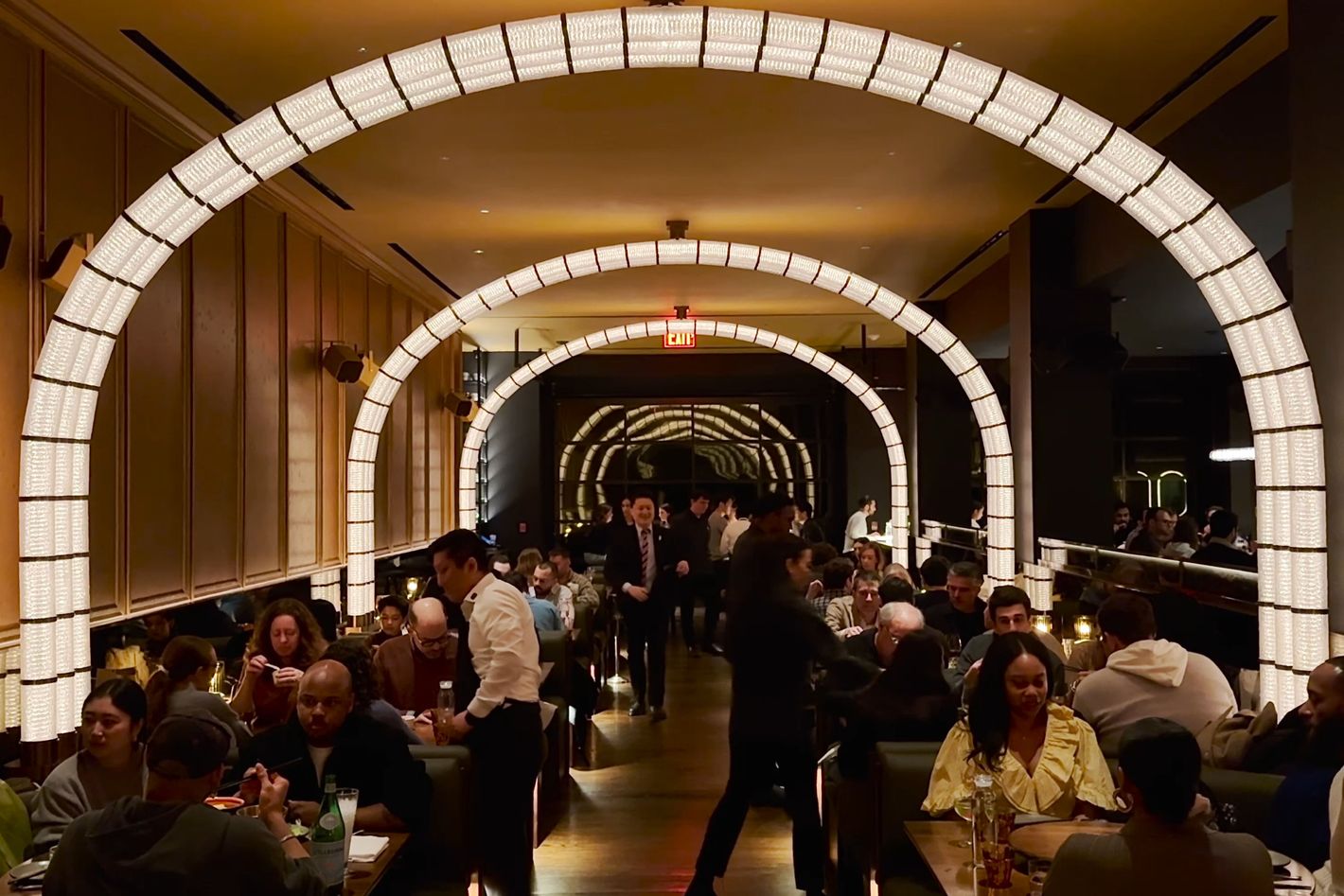when you want, where you want.
CJ Television
Restaurant Review: At the Altar of Korean Fried Chicken
 Photo: Hugo Yu
Photo: Hugo Yu
There comes a time when a New Yorker must pledge allegiance to his or her preferred Korean fried-chicken outpost: Are you a Mad for Chicken man? Pelicana partisan? Or one of the many who still lament the gone-but-not-forgotten charms of Baden Baden? Simon Kim, who Koreanized the New York steakhouse with Cote (or steakified the KBBQ, depending on your perspective), is hoping a quorum of the wealthy will warm to Coqodaq, his own entrant in the ongoing KFC wars. So far, they have.
Since it opened in January, Coqodaq (the French and Korean words for “chicken,” soldered together) has been taunting aspirant diners with nothing more than midnight Resy slots and unfulfilled promises to Notify them. Coqodaq has the low lights, pulsing music, and door-stationed bouncer of a nightclub, and most days, a line for the walk-in seats along the bar and in its front-room lounge starts to form around 4:15 p.m.
In Seoul, fried chicken is a cheapish, cheerful, local encounter. Coqodaq, in keeping with Kim’s fine-dining expertise, is designed to optimize the experience. You enter the restaurant — past a boarded-up front that will house 24 extra outdoor seats — directly into a hand-washing station, a nice touch for finger food, where you may select your own luxury soap. (The correct choice is Loewe’s tomato-leaf cleanser, which retails for $80.) Coqodaq is a “fried chicken cathedral,” Kim has said, even if David Rockwell’s interior, with its illuminated archways, suggests something closer to a fried-chicken tunnel of love.
An elevated fried-chicken experience needn’t be gouging. While unquestionably more expensive than Bonchon or one of the other chains, Coqodaq’s signature “Bucket List,” two piles of chicken with banchan and an appetite-whetting cup of consommé, counts, at $38 a person, as pretty reasonable among high-end New York restaurants. For that, you get an even split of chef Seung Kyu Kim’s “original” rice-flour-breaded chicken with four squeeze bottles of dipping sauces and a glossy version, pre-sauced with either soy and garlic or gochujang glaze — diner’s choice. To really ball out, there are supplementary tins of caviar, oysters, or the requisite social-media bait, here called the Golden Nugget™, topped with a little snort of Golden Daurenki caviar. Accompanying bubbles come from what the restaurant touts as the country’s biggest Champagne list, under the direction of Victoria James. You can guess who is being targeted by a $48 flute of Veuve Clicquot La Grand Dame 2015 — “Not that yellow label bottle, this is the real fancy stuff!” per the menu—but beyond the Grandes Marques, there are a full 100 bottles priced under $100. When presented with a $120 to $140 budget and a few details, a wine director steered me to an excellent Blanc de Noirs from Famille Moutard — at $90.
But where chicken is the namesake, chicken should be the star. At Coqodaq, a clientele raised on the homegrown KFC (Kentucky) will find its buckets reassuringly familiar (and the coleslaw to be a near-perfect dupe of the Colonel’s). The quality is clearly higher, the seasoning more evenly distributed. And so the tables fill with foursomes of finance dudes, families with brooding teens coaxed to smiles by fried food, ladies who secured their selfies in the dramatic light of the hand-washing station, all drawn by hype and bop, sugar and crunch. “I would describe that chicken as fluffy,” one ride-along said wonderingly. “I don’t know how to make a fluffy chicken.”
But a Korean American colleague I brought thought the soy-garlic glaze was light on garlic and Americanishly sweet; the gochujang, surprisingly timid. She was less bothered than I was by the mildness of the kimchee — a quick-pickled version, rather than the deeply funky, radiantly fermented stuff —but we both found the pickled daikon cut too big. She was also amused by the restaurant’s free use of the Hangul word for chicken, which decorates its frontage and its glassware. “You walk by and you’d think it was a wholesaler,” she told me. “In Korea, you’d never call a restaurant ‘Chicken.’ ”
More Reviews
All Rights Reserved. Copyright , Central Coast Communications, Inc.